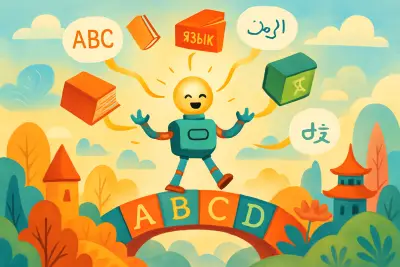Can AI Storybooks Support Multilingual Reading Experiences? 🌍📚
In our increasingly globalized world, fostering multilingual literacy is more important than ever. With diverse languages being spoken across households, schools, and communities, parents, educators, and children are looking for innovative solutions. Enter AI Storybooks—a game-changing resource that combines technology with storytelling. But can these intelligent tools truly enhance multilingual reading experiences? Let’s dive into the benefits and features of AI Storybooks!
The Rise of AI Storybooks 🚀
AI Storybooks are powered by artificial intelligence, which enriches storytelling and brings books to life. By incorporating dynamic features such as personalized storylines and multi-language options, these platforms provide an engaging reading experience that transcends borders.
Why Choose AI Storybooks for Multilingual Reading? 🤔
Diverse Language Options
One of the most striking aspects of AI Storybooks is their capability to support multiple languages. Here are a few benefits:
- Seamless Language Switch: Readers can switch between languages effortlessly, making it easy to learn and retain vocabulary.
- Cultural Context: Storylines often include cultural references that enrich the reading experience, helping kids learn about different customs and traditions.
Interactive Learning Environment
Gone are the days of passive reading! With AI Storybooks, kids engage in dynamic ways:
- Voice Interaction: Children can ask questions about the story, prompting responses that deepen their understanding.
- Personalization: The AI adapts to the child’s language proficiency, making the experience suitable for beginners and advanced readers alike.
Promoting Literacy Skills ☑️
AI Storybooks aren't just about language; they are about building essential literacy skills:
- Vocabulary Development: Exposure to diverse vocabulary enhances language skills in both native and second languages.
- Comprehension Boost: Interactive features encourage kids to think critically, aiding comprehension in multiple languages.
Enhancing Multilingual Family Bonding 👨👩👧👦
Families that speak multiple languages at home can leverage AI Storybooks to foster a shared reading experience:
- Shared Storytelling Sessions: Parents and children can enjoy stories together in both their native languages, strengthening family bonds.
- Inclusive Learning: Siblings can engage with stories that accommodate everyone’s language preferences, fostering inclusivity.
Steps to Get Started with AI Storybooks 📖
Ready to explore the world of AI Storybooks? Here’s how to get started:
Choose Your Platform: Look for an AI Storybook app that supports multiple languages. AI Story Book is a popular choice with extensive language options.
Explore Language Settings: Familiarize yourself with the settings to ensure you can easily switch languages while reading.
Select Engaging Stories: Pick stories that capture your child’s interest while being educational. The more they enjoy it, the more they learn!
Encourage Interaction: As kids read, encourage them to interact with the app. This engagement drives comprehension and retention.
Discuss the Stories: After reading, have a discussion about the story. Ask questions about vocabulary, characters, and cultural elements.
Conclusion: The Future of Multilingual Learning ✨
AI Storybooks provide a fresh, innovative approach to literacy that adapts to our diverse linguistic landscape. They empower children to become proficient in multiple languages while promoting a love of reading. By harnessing the advantages of AI and storytelling, we can create a more inclusive, educational environment for future generations.
Are you ready to transform your child’s reading journey with AI Storybooks? Visit AI Story Book today and embark on a multilingual literary adventure!
AI Storybooks, multilingual reading experiences, interactive storytelling, enhance literacy skills, language learning tools, family bonding through reading, diverse language options, personalized stories, critical thinking in children, technology in education
